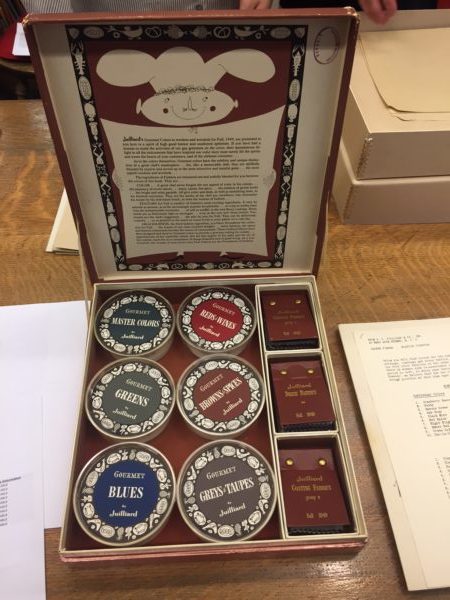At the end of February, Documenting Fashion’s MA class took a study trip to New York. Homecoming for some and the first time in America for others, these few days were outstanding, and we are excited to share our highlights with you.

Before this trip to New York, I had never seen any of Bonnie Cashin’s Coach-era sketches. Cashin designed for the luxury accessories brand for a little over a decade whilst maintaining her own sportswear company (1952-1985). She was hired by Coach’s wife & husband duo Miles and Lillian Cahn in 1962 to work collaboratively on the brand’s range of leatherwear accessories. From bucket-scooped ‘carriables’ to practical leather-trimmed ponchos, Cashin became well-known for her unusual combinations of texturally diverse fabrics. Cashin was Coach’s first designer, and I believe her veracious, playful nature as a creative can be most resolutely understood through her quirky sketches.
As previously mentioned, I had never seen Cashin’s sketches before, and yet during this four-day study trip, I was able to closely examine two collections of her work, from different archives: the Special Collections & College Archives at the Fashion Institute of Technology and at the Brooklyn Museum Fashion and Costume Archive. It was not singularly the drawings that provided me with such entertainment—though bold and thoroughly fun—but also the captions Cashin had devised to sit alongside them. Her words inject the drawings with a splash of campy humour.

Take, for example, this waifish figure laden with piles of precariously stacked Cashin-Coach handbags, which are seemingly ready to topple from her outstretched arms. In the right top-hand corner of this sketch is the accompanying caption: ‘I just want to steal every Cashin-carry I can put my hands on’.

In this sketch, like the others I studied, Cashin employs a provocative statement and counterbalances its weight with her own special brand of humour. The term ‘body bag’ holds two meanings—at least to me (!): a bag in which you place a cadaver… or a cross-body bag in which you hold your phone, keys, lip-salve, whatever. The drawing of an in-motion model paired with a quirky caption makes Cashin’s work that much more unique. She has also incorporated her own surname to further instate the mark of her hand within the image.
I am reminded of the wit that contemporary illustrators, such as Julie Hout, use to poke fun at the commercial fashion industry’s superficial nature. Even though the girls that decorate Hout’s Instagram feed are clumsy, brash and all together horribly scatty, I want to be them, and their parodied inadequacies make them all the more relatable.

This is also true of Cashin’s cluttered mannequin, weighed down by her bags, her indecision and her shopaholic tendencies. I like to think of her illustrative style as a precursor to the current trend of satirical fashion illustrations swarming our Instagram feeds.
Once again, we defer to you, Bonnie!
Find amazing images of Cashin’s sketches on FIT’s digital image library: fitdil.fitnyc.edu
OR through the Brooklyn Museum’s Costume and Textiles Archive Collection: www.brooklynmuseum.org/opencollection/archives




















